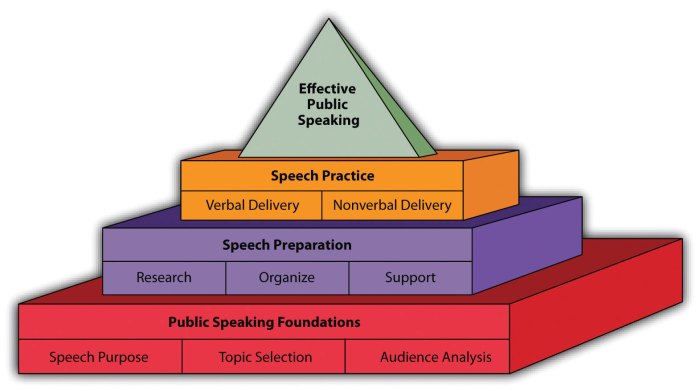Public speaking is all about the presentation of quality monologues. This art form requires careful preparation, engaging delivery, and effective use of visual aids to captivate an audience and convey a message effectively.
To craft compelling monologues, speakers must understand the characteristics of effective storytelling, engage their audience through rapport and body language, and organize their content logically. Practice and preparation are essential for enhancing presentation skills, managing nerves, and delivering monologues with confidence.
Defining Quality Monologues
Quality monologues are the foundation of effective public speaking. They captivate audiences, convey ideas clearly, and leave a lasting impression. Essential characteristics of compelling monologues include:
- Clarity and Coherence:Monologues should present a clear and coherent message, with a logical flow of ideas and a well-defined structure.
- Relevance and Resonance:Monologues should connect with the audience on a personal level, addressing topics that are relevant to their interests and experiences.
- Emotional Impact:Monologues should evoke emotions, creating a connection between the speaker and the audience. They can inspire, motivate, or challenge listeners.
- Authenticity and Originality:Monologues should be authentic, reflecting the speaker’s unique perspective and experiences. They should not be imitations or reproductions of other works.
- Memorable and Impactful:Monologues should leave a lasting impression on the audience, providing insights, sparking thought, or inspiring action.
Examples of effective monologues can be found in various contexts, including:
- Speeches:Monologues form the core of speeches, delivering a central message or argument.
- Plays:Monologues in plays allow characters to express their thoughts, feelings, and motivations.
- Stand-up Comedy:Comedians use monologues to entertain audiences with humorous observations and stories.
- Poetry:Monologues in poetry explore themes and emotions through the use of language and imagery.
- Personal Narratives:Monologues can be used to share personal experiences, insights, and reflections.
Crafting engaging and memorable monologues involves employing specific techniques:
- Develop a Strong Structure:Organize the monologue with a clear introduction, body, and conclusion, ensuring a logical flow of ideas.
- Use Vivid Language:Employ descriptive language and imagery to create a sensory experience for the audience.
- Incorporate Personal Anecdotes:Share personal stories and experiences to connect with the audience on an emotional level.
- Practice Regularly:Rehearse the monologue multiple times to ensure smooth delivery and build confidence.
- Seek Feedback:Ask for constructive criticism from trusted sources to identify areas for improvement.
Engaging the Audience
Engaging the audience is crucial for successful public speaking. Monologues should connect with listeners, establish a rapport, and maintain their interest throughout the presentation.
To engage the audience effectively:
- Establish a Connection:Build a personal connection with the audience by sharing personal experiences, using humor, or acknowledging their presence.
- Maintain Eye Contact:Make eye contact with audience members to create a sense of intimacy and connection.
- Use Body Language:Employ appropriate body language to convey enthusiasm, confidence, and engagement. Avoid distracting gestures or movements.
- Vary Vocal Delivery:Use a variety of vocal techniques, such as volume, pace, and intonation, to emphasize key points and maintain interest.
- Incorporate Audience Participation:Engage the audience by asking questions, inviting responses, or using interactive elements.
Organizing and Structuring Content

Effective monologues require careful organization and structuring of content to ensure clarity and coherence.
Principles for organizing content include:
- Logical Flow:Organize the monologue in a logical sequence, ensuring a smooth transition between ideas.
- Use Transitions:Employ transitions to connect different sections of the monologue and guide the audience through the content.
- Signposting:Provide signposts to indicate upcoming sections or key points, helping the audience follow the monologue.
- Pacing:Control the pace of the monologue to maintain interest and prevent boredom or confusion.
Enhancing Presentation Skills

Improving presentation skills is essential for delivering impactful monologues. This involves practice, preparation, and effective techniques.
To enhance presentation skills:
- Practice Regularly:Rehearse the monologue multiple times to build confidence and fluency.
- Prepare Thoroughly:Research the topic, gather supporting evidence, and plan the structure of the monologue.
- Manage Nerves:Use relaxation techniques, such as deep breathing or visualization, to manage stage fright and anxiety.
- Handle Questions Effectively:Anticipate potential questions and prepare responses to address them confidently and professionally.
Using Visual Aids: Public Speaking Is All About The Presentation Of Quality Monologues
Visual aids can enhance the impact of monologues by providing visual support and engaging the audience.
When using visual aids:
- Select Relevant Aids:Choose visual aids that directly support the content of the monologue and add value to the presentation.
- Design Effectively:Create visually appealing aids that are easy to read, understand, and visually appealing.
- Incorporate Seamlessly:Integrate visual aids into the monologue smoothly, ensuring they complement the spoken content and enhance the audience’s experience.
Evaluating and Improving Performance

Evaluating and seeking feedback is crucial for improving presentation skills and delivering effective monologues.
To evaluate performance:
- Self-Assessment:Reflect on the delivery of the monologue, identifying areas for improvement and strengths.
- Seek Feedback:Ask trusted sources, such as colleagues, mentors, or audience members, for constructive criticism.
- Incorporate Feedback:Use feedback to identify specific areas for improvement and make necessary adjustments.
- Continuous Improvement:Continuously strive to improve presentation skills through practice, feedback, and learning new techniques.
Popular Questions
What are the key elements of a compelling monologue?
A compelling monologue should have a clear purpose, a strong narrative arc, vivid imagery, and engaging language.
How can I improve my audience engagement during a monologue?
Establish eye contact, use body language to convey emotion, and vary your vocal delivery to keep your audience interested.
What techniques can I use to organize my monologue effectively?
Use transitions to connect ideas, signposting to guide your audience through the monologue, and pacing to control the flow of information.